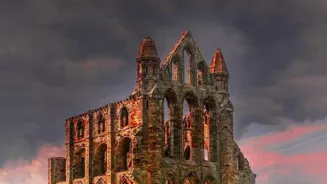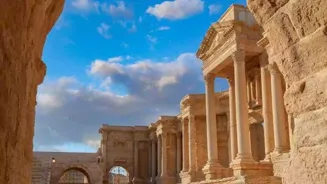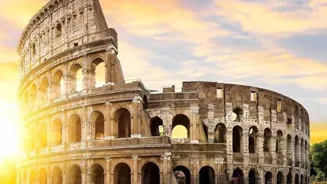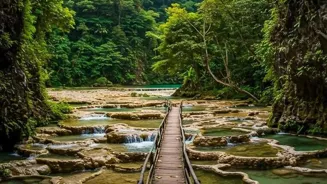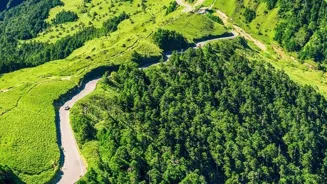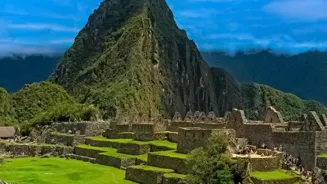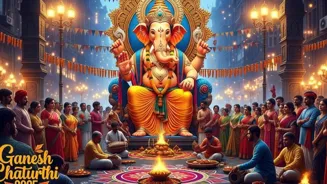Unveiling India's Ancient Marvels: Discover Top 7 Historical Sites That Define Heritage. Dive into the past!
India, a land steeped in history and culture, offers a treasure trove of ancient sites that whisper
tales of bygone eras. From majestic temples to intricate cave paintings, these historical wonders are a must-visit for any traveller seeking to connect with the country's rich heritage.
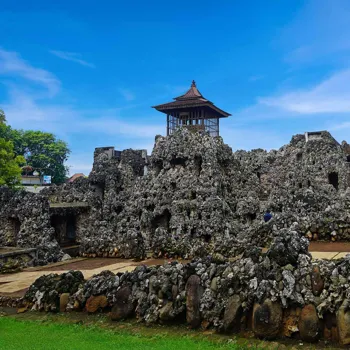
This year, plan a journey to explore these top 7 ancient sites that promise an unforgettable experience.
Iconic Taj Mahal: Eternal love symbol, Mughal architecture masterpiece
No trip to India is complete without witnessing the breathtaking beauty of the Taj Mahal. This iconic monument, a symbol of eternal love, was commissioned by Mughal emperor Shah Jahan in memory of his beloved wife Mumtaz Mahal.
Its pristine white marble, intricate carvings, and perfectly symmetrical design are a testament to the architectural brilliance of the Mughal era. Sunrise is the best time to visit the Taj Mahal, as the soft morning light bathes the monument in a golden glow, creating a truly magical spectacle.
Don't forget to explore the surrounding gardens and the Yamuna riverbank for different perspectives of this architectural masterpiece. Remember to book your tickets online in advance to avoid long queues.
The Taj Mahal stands not just as a monument, but as a timeless symbol of love that transcends generations. The intricate details of the inlay work, with precious and semi-precious stones, speak volumes of the craftsmanship of the artisans who dedicated their lives to its creation.
A visit to the Taj Mahal is an emotional experience, leaving you in awe of its grandeur and the story it represents.
The Ajanta and Ellora Caves: ancient rock-cut marvels in Maharashtra
The Ajanta and Ellora Caves, located in Maharashtra, are a UNESCO World Heritage site and examples of ancient Indian rock-cut architecture.
Ajanta is famed for its Buddhist cave paintings, depicting scenes from the Jataka tales, while Ellora is renowned for its rock-cut Hindu, Buddhist, and Jain temples, representing religious harmony.
The Kailasa Temple (Cave 16) at Ellora is a monolithic structure carved out of a single rock, a feat of engineering and artistry that defies imagination. Exploring these caves is like stepping back in time, offering a glimpse into the religious beliefs and artistic prowess of ancient India.
Allocate at least two days to fully appreciate the artistic and historical significance of these caves. The intricate details of the sculptures and paintings, preserved over centuries, tell stories of gods, goddesses, ordinary people, and the vibrant life of ancient India.
The sheer scale of the Kailasa Temple, hewn from a single rock, is a testimony to the skill and dedication of the artisans who created it.
Hampi: UNESCO site with ancient ruins, temples, and rich history
Hampi, a UNESCO World Heritage site in Karnataka, was the capital of the Vijayanagara Empire, one of the richest and most powerful empires in medieval India. Today, Hampi is a captivating ruin, a sprawling landscape dotted with temples, palaces, and other architectural marvels.
The Virupaksha Temple, still an active place of worship, is a prominent landmark. Other must-see attractions include the Vittala Temple with its iconic stone chariot, the Lotus Mahal, and the Elephant Stables.
Exploring Hampi is like wandering through an open-air museum, where every stone has a story to tell. Rent a bicycle or a scooter to navigate the vast landscape of Hampi and discover its hidden gems. Hire a local guide to learn about the history and mythology associated with each monument.
The sunset views from Matanga Hill are simply breathtaking, offering a panoramic view of the entire ruined city. Hampi is a place that captivates the imagination and transports you back to the glory days of the Vijayanagara Empire.
Khajuraho temples in Madhya Pradesh known for intricate sculptures and vibrant dance festival
Located in Madhya Pradesh, Khajuraho is famous for its group of temples adorned with intricate sculptures. These temples, built by the Chandela dynasty, are renowned for their nagara-style architecture and their explicit sculptures.
The sculptures depict a variety of themes, including daily life, mythology, and celestial beings. While often associated with explicit scenes, the sculptures are a celebration of human life and creativity.
The Kandariya Mahadeva Temple is the largest and most impressive temple in the Khajuraho complex. Take your time to admire the detail and craftsmanship of the sculptures. Hire a guide to understand the symbolism and meaning behind the various carvings.
The Khajuraho Dance Festival, held annually, is a vibrant celebration of Indian classical dance forms. The temples of Khajuraho stand as a testament to the artistic and architectural achievements of the Chandela dynasty.
The Great Stupa at Sanchi: Symbol of Indian Buddhism
The Great Stupa at Sanchi, in Madhya Pradesh, is one of the oldest stone structures in India and an important monument of Indian Buddhism. Commissioned by Emperor Ashoka in the 3rd century BCE, the stupa houses relics of Lord Buddha.
The intricate carvings on the gateways (toranas) depict scenes from the life of Buddha and the Jataka tales. Sanchi is a place of peace and tranquility, attracting pilgrims and tourists alike. The Sanchi Stupa is not just a monument, but a symbol of the spread of Buddhism across India and beyond.
The intricate carvings on the toranas offer a glimpse into the life and teachings of Buddha. The surrounding monasteries and temples provide further insights into the Buddhist monastic life. A visit to Sanchi is a journey into the heart of Buddhism.
Rani ki Vav: UNESCO site with stunning architecture, sculptures, and history
Rani ki Vav, located in Gujarat, is a UNESCO World Heritage Site and an ancient stepwell renowned for its architecture and intricate sculptures. Built by Queen Udayamati in memory of her husband King Bhimdev I of the Solanki dynasty, this stepwell served both a practical and spiritual purpose.
The stepwell has seven levels of stairs and sculptural panels featuring hundreds of deities and mythological figures. The architecture and sculptures are a testament to the artistic and engineering skills of the artisans who created this magnificent structure.
Rani ki Vav is more than just a stepwell. It is an architectural marvel and a testament to the ingenuity of ancient Indian artisans. The intricate sculptures, depicting stories from Hindu mythology, are a delight to behold.
The stepwell provides a glimpse into the water management systems of ancient India. Rani ki Vav is a must-visit for anyone interested in architecture, history, and Indian culture.
The Konark Sun Temple, in Odisha, is a magnificent example of Kalinga architecture and a UNESCO World Heritage site. Dedicated to the Sun God Surya, the temple is designed as a colossal chariot with intricately carved stone wheels, horses, and deities. The temple is a marvel of engineering and artistry, showcasing the advanced knowledge of astronomy and mathematics in ancient India. The Konark Sun Temple is a testament to the artistic and architectural brilliance of the Kalinga dynasty. The intricate carvings on the temple depict scenes from mythology, daily life, and warfare. The temple is aligned in such a way that the first rays of the sun fall on the main deity. A visit to the Konark Sun Temple is a journey into the heart of ancient Indian art and culture.
These seven ancient sites are just a glimpse of the rich historical and cultural heritage that India has to offer. Plan your trip today and embark on a journey of discovery and wonder. These sites will transport you back in time and leave you with memories that will last a lifetime.
Remember to respect the local customs and traditions when visiting these sites and to dress appropriately. Enjoy your exploration of India's historical wonders!
AI Generated Content. Glance/InMobi shall have no liability for the content